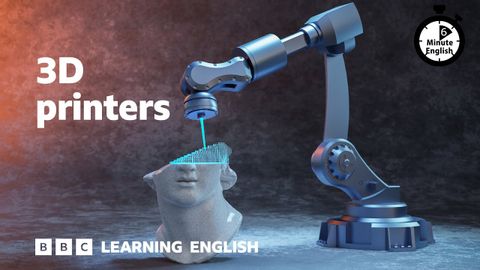【BBC6分英会話】超画期的!「3Dプリンター」とは?
林宜悉 が 2023 年 02 月 07 日 に投稿  この条件に一致する単語はありません
この条件に一致する単語はありません- n.言い回し;音楽の節;語句;句
- v.t./i.言い表す
US /ˈprɑsˌɛs, ˈproˌsɛs/
・
UK /prə'ses/
- v.t.(コンピュータの)データを処理する;処理する;処理する;一連の工程を経る;加工する : 加工処理する;理解する
- n. (c./u.)手続き;一連の行為;方法;訴訟手続き;プロセス (コンピューター)
US /məˈtɪriəl/
・
UK /məˈtɪəriəl/
- n. (c./u.)衣料;原材料;原料
- adj.関連な,重要な;世俗的な : 物質的な : 物質でできた
エネルギーを使用
すべての単語を解除
発音・解説・フィルター機能を解除
